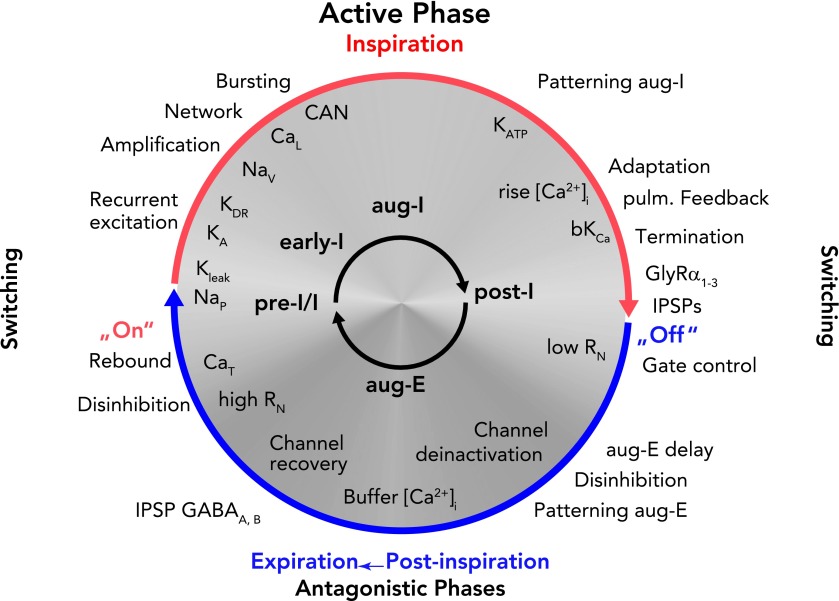FIGURE 7.
Schematic representation of the dynamic interplay of synaptic processes and neuronal biophysical properties determining rhythm generation and neuronal activity patterns during a respiratory cycle
The ongoing rhythmic cycling of respiratory phases results from a coalition between synaptic inputs to neurons and intrinsic neuronal biophysical properties (65). Network-related synaptic events [recurrent excitation, and inhibitory glycinergic (GlyRa1–3) or GABAergic (GABAA,B) neurotransmitter-related inhibition (IPSPs) or disinhibition] are indicated outside the circle. Note that there is a continuous inflow of synaptic activity from pulmonary and chemoreceptive afferents, as well as pontine and medullary reticular formation inputs. Intrinsic neuronal biophysical processes, including membrane channel activation, recovery from inactivation, deinactivation under membrane voltage control, as well as activity-related Ca2+-dependent processes, are indicated inside the circle in white lettering. Synaptic processes in the rhythmically active respiratory circuits control membrane potentials in neurons in the subthreshold voltage range to orchestrate expression of intrinsic membrane conductances, including burst-promoting conductances (CaT and NaP) as well as K+ conductances (KLeak, KA) that regulate onset of bursting. During neuronal spiking activity, Na+ and Ca2+ fluxes together with CAN augment neuronal activities to generate the active phases of the cycle. Ca2+ fluxes also activate bK(Ca) to induce spike-frequency adaptation that, in addition to synaptic inhibition, contributes to termination of active phases. The figure should be read clockwise. For further explanation, see text.

